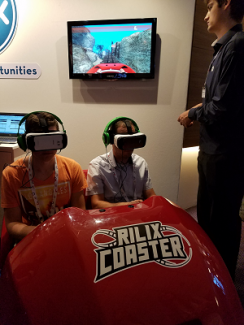
AMSTERDAM -- Some of the technology on display this week at Europe’s largest broadcast tradeshow, IBC 2016, started to feel ho-hum, after months of promises but limited delivery. Virtual reality? So hot, but still relegated to clunky goggles. Integrated, IP-based workflows? Everybody’s offering them. End to end video delivery? I barely heard the term mentioned, because it’s just taken for granted that vendors provide this service.
That’s not to say that there was no new technology at the show: 8K, holography, and improved VR devices were among the gee-whiz gadgets being showcased in 15-plus exhibit halls that make up Amsterdam’s RAI convention center. Cloud-based video production and management solutions were everywhere, not to mention solutions to cloud-based problems like making sure affordable, ample storage is available for OTT live streaming and on-demand efforts.
Partnering is key to online video success
Vendors are continuing to partner on workflow and delivery solutions – for example, Siemens integrated its Smart Video Engine middleware solution into Imagine Communications’ CloudXStream product, which enables more customizable UX interfaces, among other benefits.

IBC Future Zone.
Still, it’s time for providers to start delivering on the promise of next-generation streaming. While it’s clear that every major broadcaster and pay-TV provider is building an over-the-top play – or like CBS, already delivering a linear experience online – demand for higher-resolution technology like HDR and 360-degree video could challenge already-stretched video delivery budgets.
Even the gadgets may need work: Despite VR’s gee-whiz potentiality, some of the attendees who tried out VR goggles weren’t impressed by the image resolution and found the devices distractingly heavy; while at least one panelist, Brandwidth’s Dean Johnson, said that some technology either isn’t ready for prime time, or will never quite live up to its promise.
And that makes things a little worrying for one segment of the broadcast industry that has an important role to play: the next generation of producers, engineers and broadcast managers.
Preparing for the future
For part of the show I was shadowed by Kate Mazzotta, a master’s candidate from Belfast studying broadcasting. She came back from the IBC Future Zone and Rising Stars panels energized but also a little worried. Her university uses older technology to teach the basics of broadcasting; some of the instructors aren’t literate in editing software; and she fretted that students weren’t being made aware of all the existing and upcoming broadcast ingest, editing and playout tools in the ecosystem.
“…when I started speaking to software developers and industry pioneers, I began to understand how dependent my work truly is on new developments within the industry,” she told me in an email this week. “Everything I create is meant to be consumed by an audience; how can that happen if I don't understand how content is being distributed or what new technology is changing how we make it?
Broadcast is changing rapidly; perhaps my only worry is whether or not university educations are able to keep up with it.”
The observation is pretty interesting – as the greater broadcast industry begins to change and shift to all-digital, will it leave creators behind? Maybe not, but it’s a testament to how quickly certain technologies are changing thanks to IP- and cloud-based capabilities that digitize the video ecosystem from the moment a camera lens captures the action until that image reaches the viewer. Once again, IBC ultimately left the industry with more questions than answers – and more opportunities to change and grow. -- Sam